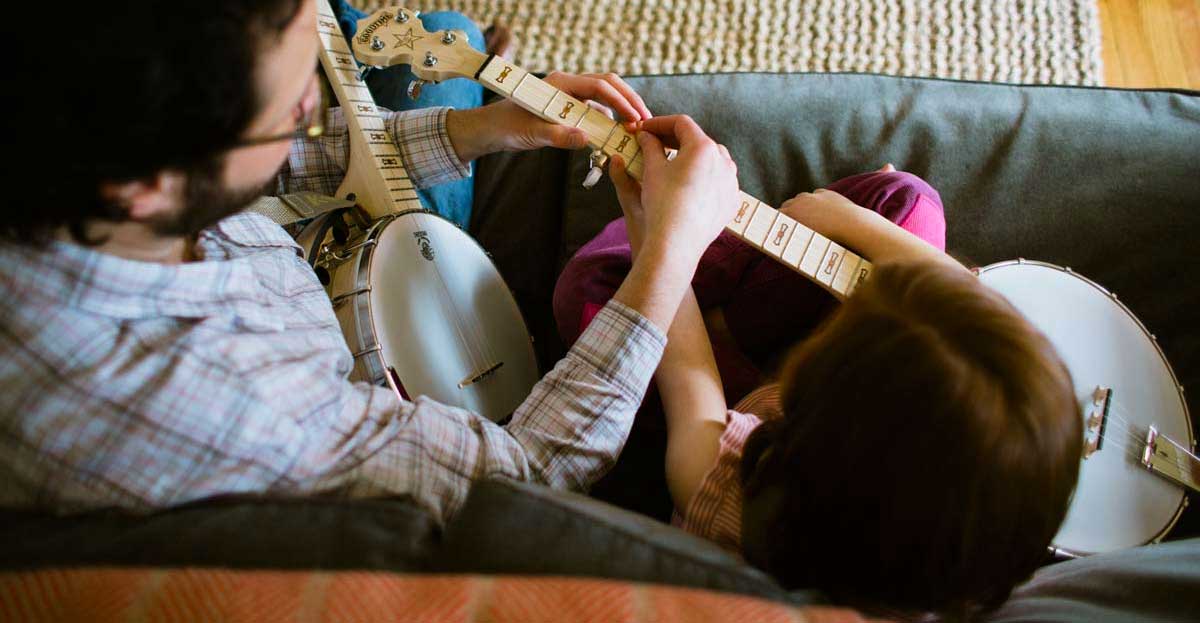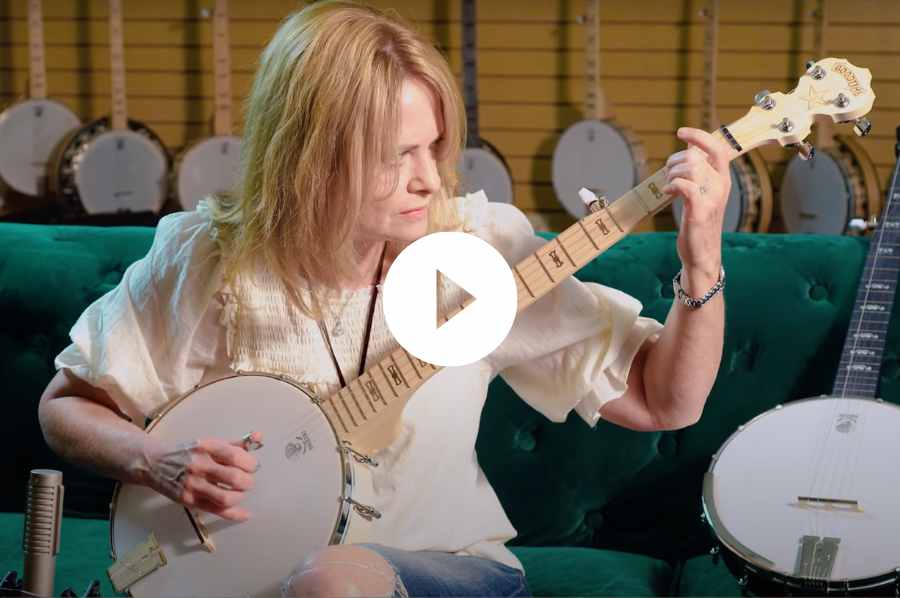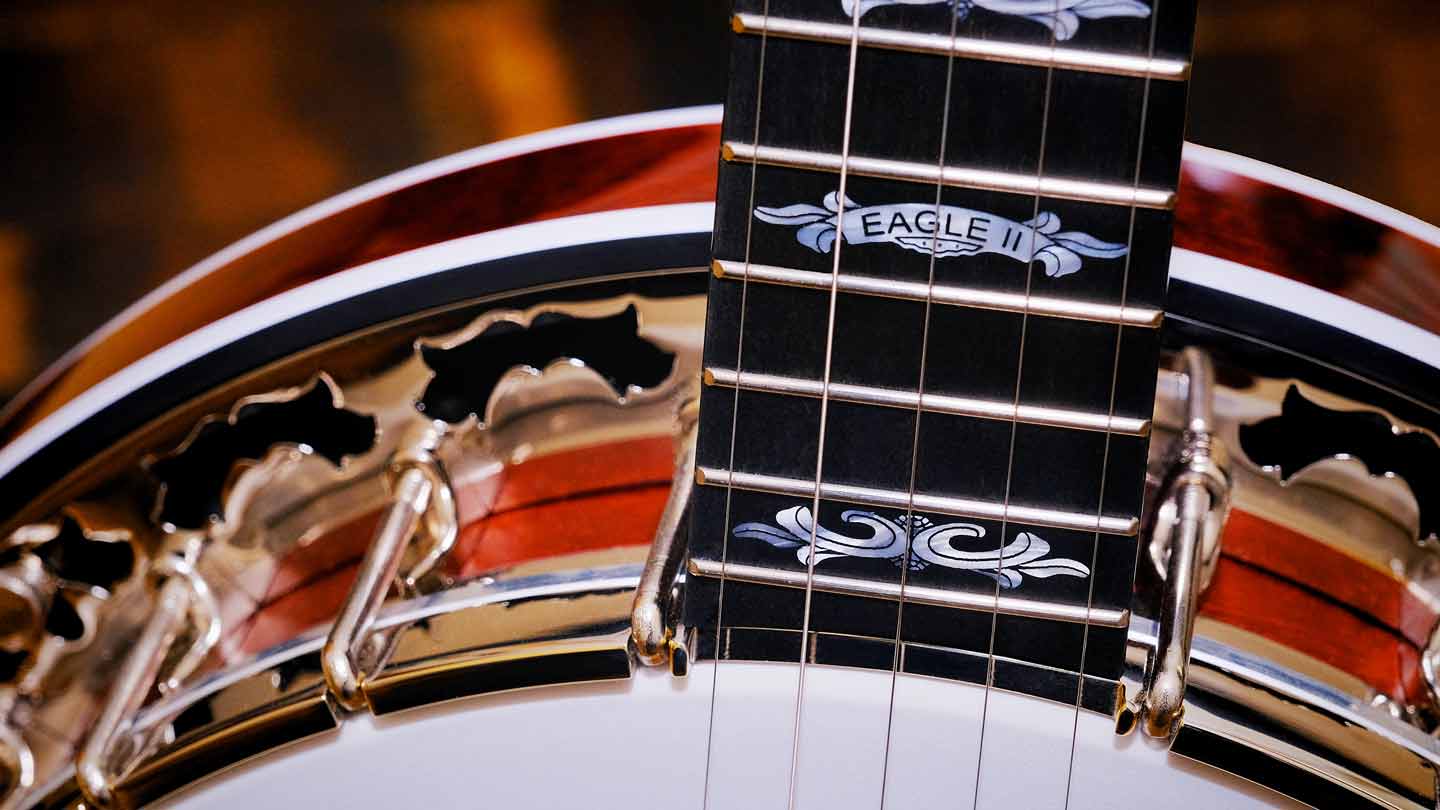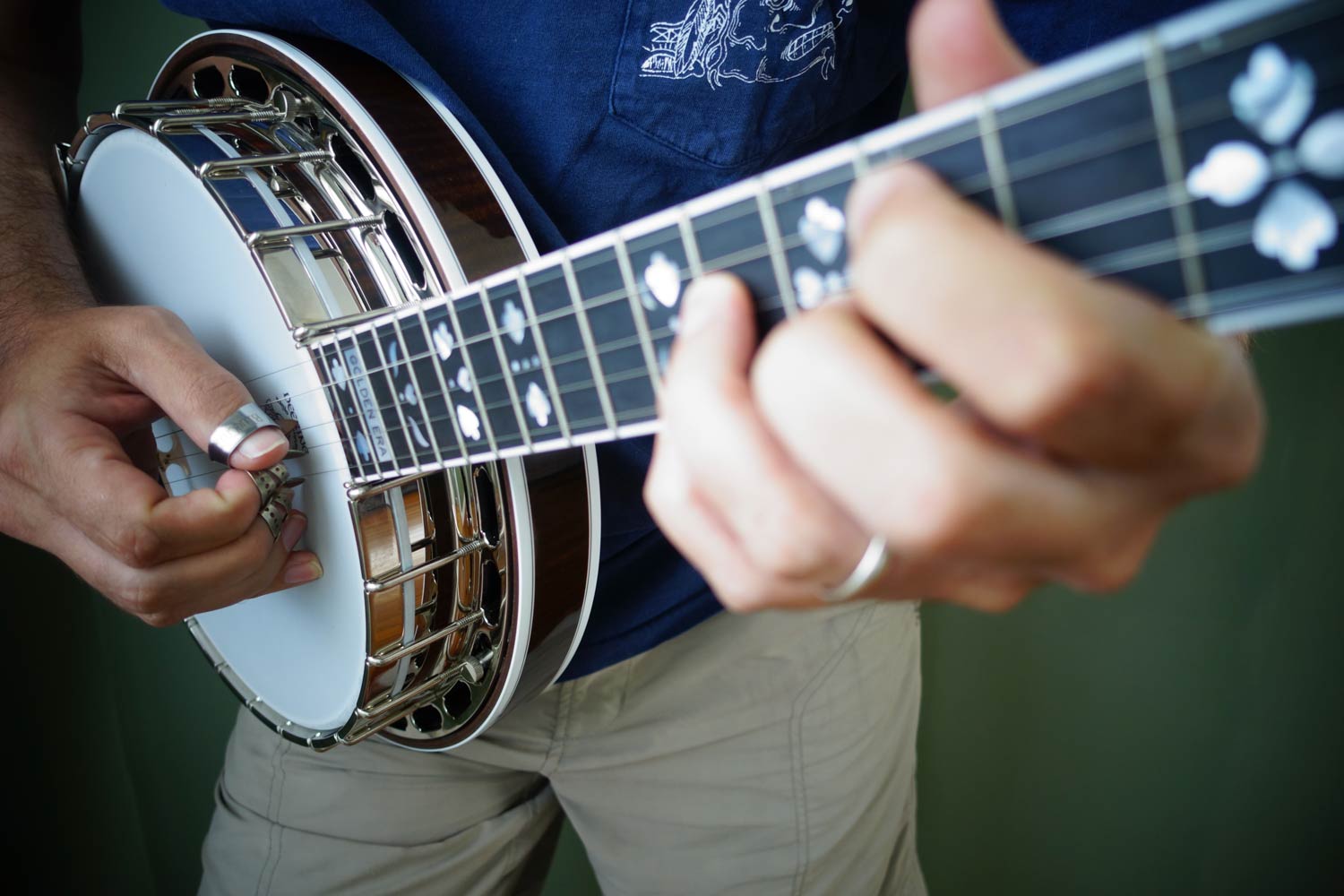
Each Artisan Goodtime model showcases a proprietary Midnight Maple fingerboard, ornate Artisan-inspired inlays, and a beautiful rich brown stain that exudes elegance. Artisan Goodtime banjos are also equipped with planetary banjo tuners, allowing for precise tuning and exceptional performance.

Learning how to play the banjo is no different. There are different types of banjos and plenty of new terminology for parts of banjos and playing styles. Aspiring players also wonder what makes one banjo better than another.

Watch and listen to Deering artists play our banjos and choose your favorite tone!
What Sets Deering Apart
Made In U.S.A.
All of our banjos are made by passionate banjo craftsmen and women in our Spring Valley, California shop.
Family Owned Since 1975
Deering Banjo Company was founded by Greg & Janet Deering in 1975 and continues to be family owned & operated. Today Greg & Janet's daughter Jamie Deering is the CEO of Deering Banjos.
Banjo Experts
Deering makes banjos. We don't make other instruments. We focus on what we do best and do it at the highest level.
ACCESSIBILITY STATEMENT
If you are using a screen-reader and are having problems using this website, please call 619-464-8252 or contact us for assistance at info@deeringbanjos.com














Great job, David! Thanks for all your help with these videos. They make playing even more enjoyable!
Al Fike, Comedian
Dallas, TX
www.alfike.com
Wouldn’t it also be a good idea to warn people not to use the coordinator rod to raise or lower the action more than 1/16"? You’re the experts—but since this changes the string height by actually distorting the banjo’s body, my understanding is that it should be used for only the slightest adjustments.
Finally, what about simply trying a higher or lower bridge?That’s often all you need to fix string height, and obviously a much simpler, less-potentially-damaging procedure, especially in the hands of non-professionals. I’d at least mention that before showing people this more radical approach.
Great video—except for possibly one thing. Chad explains how important it is, when adjusting a two-rod banjo, to loosen the inner rod before you start changing the outer one. But he doesn’t mention this till more than halfway through the video, when he actually starts adjusting a two-rod banjo. How many people with two-rod banjos may be watching this and following along during the one-rod section, not realizing they could damage their banjos by not loosening the center rod first?
Thank you so much for that video! VERY helpful.
Very helpful video; thank you. The coordinator rod is different than the truss rod—correct? It would be great to see a video about how to tell which might be the culprit when the strings buzz down the neck (at the 2nd fret and below, to be specific) and the string height varies up and down the neck so that it seems the neck is bowing. (I play a Deering John Hartford, if that helps answer the question.) Thanks again for the maintenance instruction videos. Please keep them coming!
Leave a comment